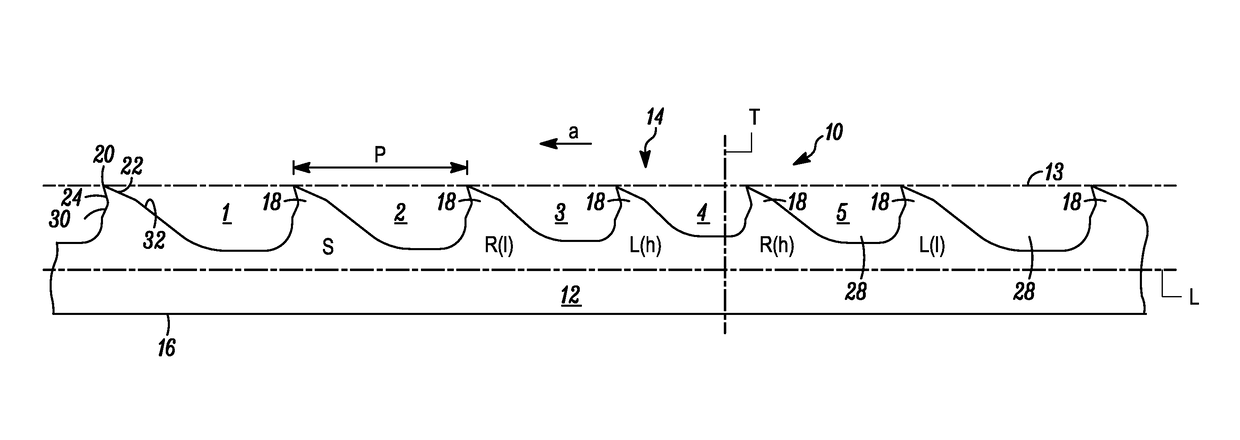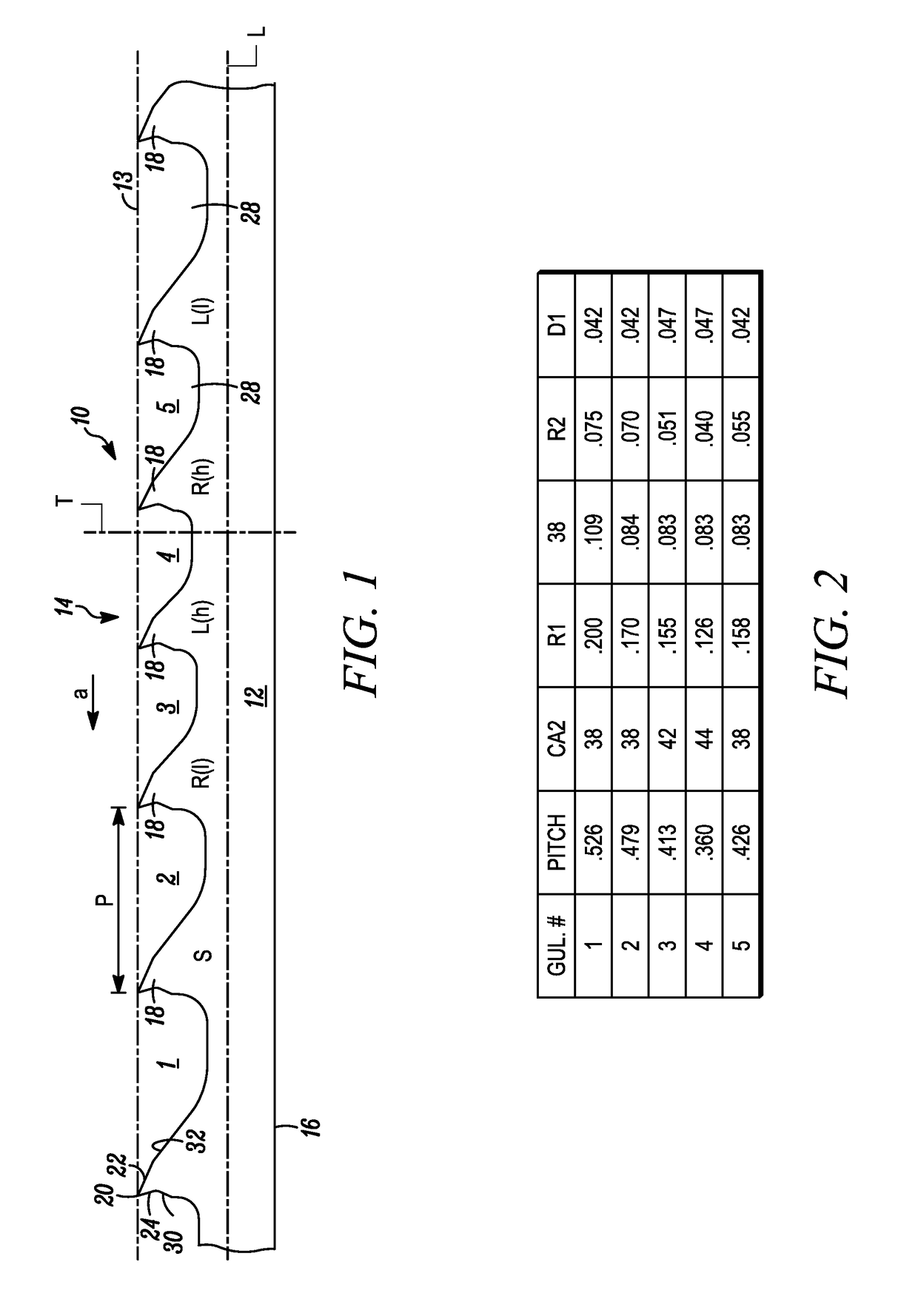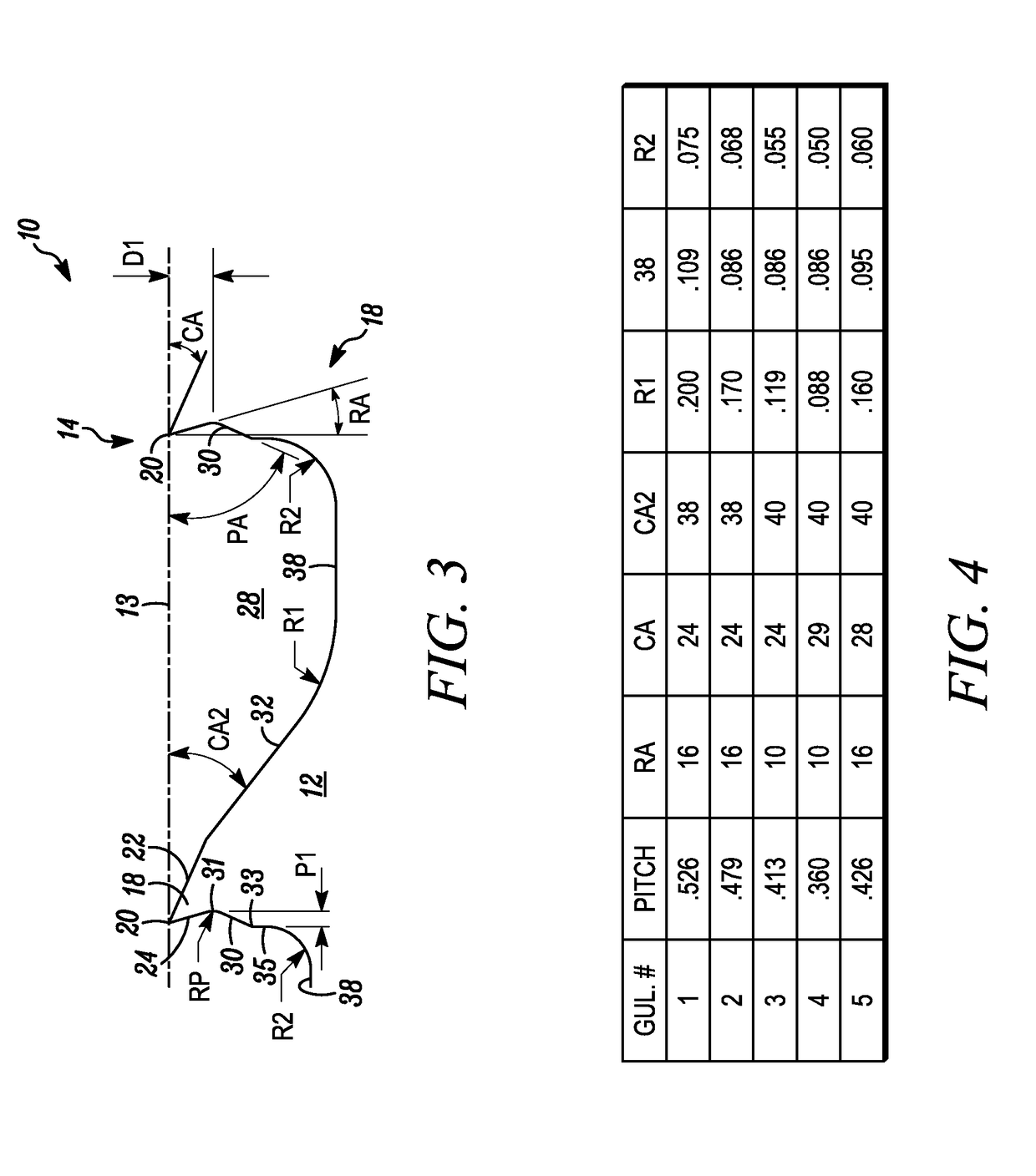Saw blade with tooth form projection
a technology of tooth-forming projection and saw blade, which is applied in the direction of band saws, saw chains, manufacturing tools, etc., can solve the problems of blade wear, rapid tool wear, and inability to cut materials as straight as desired, so as to reduce the tool/chip contact zone, reduce the heat generation, and maximize the use of available tooth-gullet capacity
- Summary
- Abstract
- Description
- Claims
- Application Information
AI Technical Summary
Benefits of technology
Problems solved by technology
Method used
Image
Examples
Embodiment Construction
[0024]In FIG. 1, a saw blade for cutting difficult-to-cut materials in accordance with an embodiment of the present invention is indicated generally by the reference numeral 10. In FIG. 1, the saw blade 10 is a band saw blade comprising a band 12 having a cutting edge 14 and a back edge 16, and defining a longitudinal axis “L” and a transverse axis “T”. The direction of cutting (the forward direction) is indicated by the arrow “a”. The cutting edge 14 of the band saw blade 10 includes a plurality of teeth 18, 18 thereon. The spacing measured between the tips of adjacent teeth, as illustrated in FIG. 1, is the pitch “P”. However, as may be recognized by those of ordinary skill in the pertinent art based on the teachings herein, the pitch may be measured between any of numerous other corresponding points between adjacent teeth.
[0025]Referring to FIG. 3, each tooth 18 includes a tip 20, a primary clearance surface 22 located on one side of the tip, a rake face 24 located on an opposite...
PUM
| Property | Measurement | Unit |
|---|---|---|
| acute angle | aaaaa | aaaaa |
| rake angle | aaaaa | aaaaa |
| rake angle | aaaaa | aaaaa |
Abstract
Description
Claims
Application Information
 Login to View More
Login to View More - R&D
- Intellectual Property
- Life Sciences
- Materials
- Tech Scout
- Unparalleled Data Quality
- Higher Quality Content
- 60% Fewer Hallucinations
Browse by: Latest US Patents, China's latest patents, Technical Efficacy Thesaurus, Application Domain, Technology Topic, Popular Technical Reports.
© 2025 PatSnap. All rights reserved.Legal|Privacy policy|Modern Slavery Act Transparency Statement|Sitemap|About US| Contact US: help@patsnap.com



